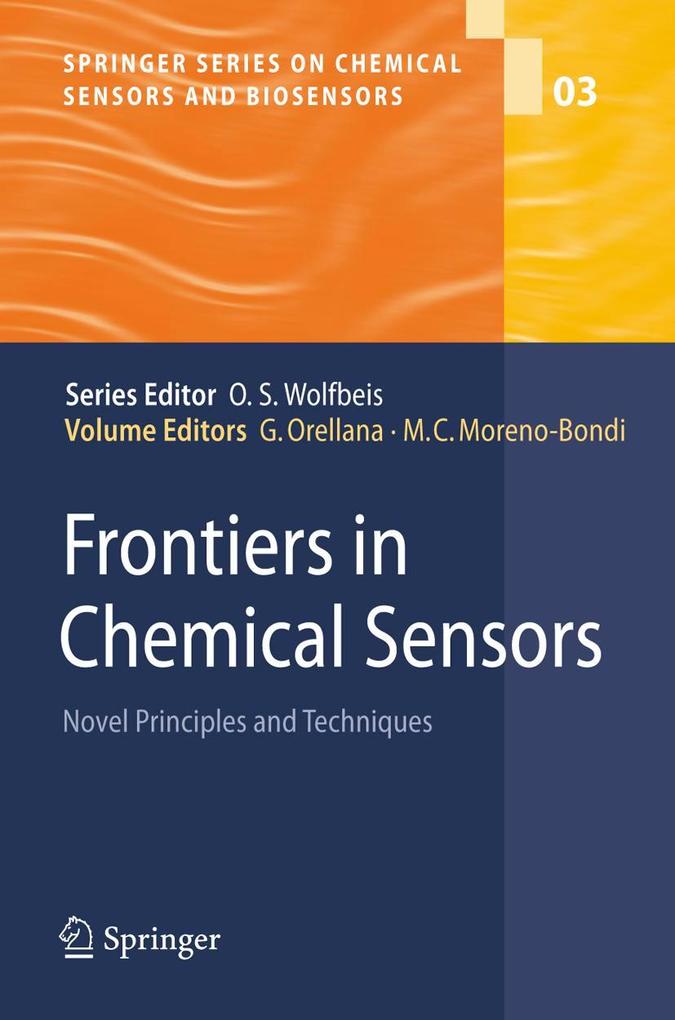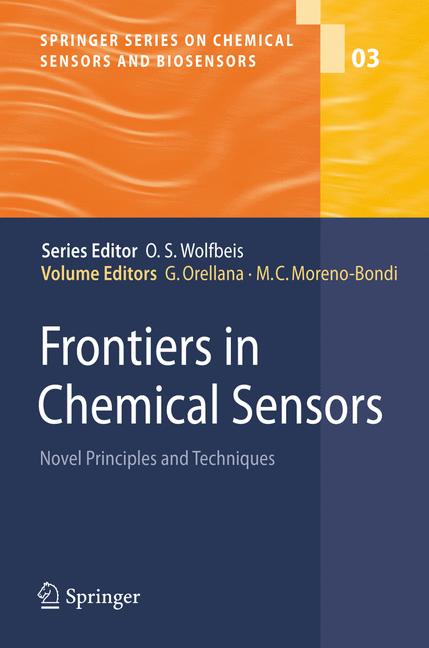With their similarity to the organs of the most advanced creatures that inhabit the Earth, sensors are regarded as being the "senses of electronics": arti? cial eyes and ears that are capable of seeing and hearing beyond the range of - man perception; electronic noses and tongues that can recognise odours and ? avours without a lifetime training; touch that is able not only to feel the texture and temperature of the materials but even to discern their chemical compo- tion. Among the world of chemical sensors, optical devices (sometimes termed "optodes", from the Greek "the optical way") have reached a prominent place in those areas where the features of light and of the light-matter interaction show their advantage: contactless or long-distance interrogation, detection sensitivity, analyte selectivity, absence of electrical interference or risks, and lack of analyte consumption, to name just a few. The introduction of optical ? bres and integrated optics has added more value to such sensing since now light can be con? ned and readily carried to dif? cult-to-reach locations, higher information density can be transported, indicator dyes can be immobilised at the distal end or the evanescent ? eld for unique chemical and biochemical sensing (including multiplexed and distributed measurements), optical s- sors can now be subject to mass production and novel sensing schemes have been established (interferometric, surface plasmon resonance, ? uorescence energy transfer, supramolecular recognition . . . ).
Inhaltsverzeichnis
Absorbance-Based Integrated Optical Sensors. - Luminescence Lifetime-Based Imaging of Sensor Arrays for High-Throughput Screening Applications. - Cataluminescence-Based Gas Sensors. - Hollow Waveguide Infrared Spectroscopy and Sensing. - Combinatorial Method for Surface-Confined Sensor Design and Fabrication. - The Interplay of Indicator, Support and Analyte in Optical Sensor Layers. - Challenges in the Design of Optical DNA Biosensors. - Gold Nanoparticles in Bioanalytical Assays and Sensors. - Reverse Symmetry Waveguide for Optical Biosensing. - Materials for Luminescent Pressure-Sensitive Paint. - Optical Sensing of Enantiomers. - Optical Sensors for Ions and Protein Based on Digital Color Analysis.





































